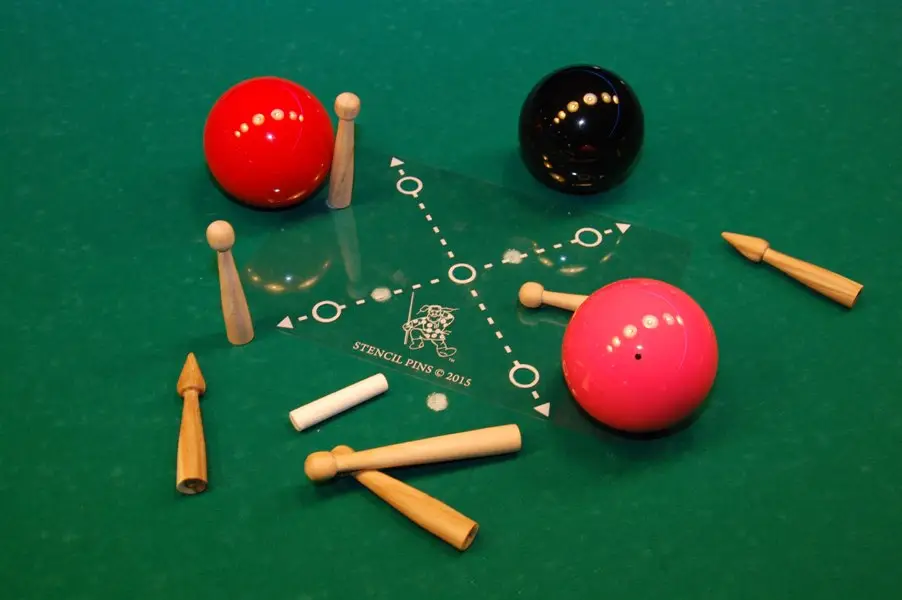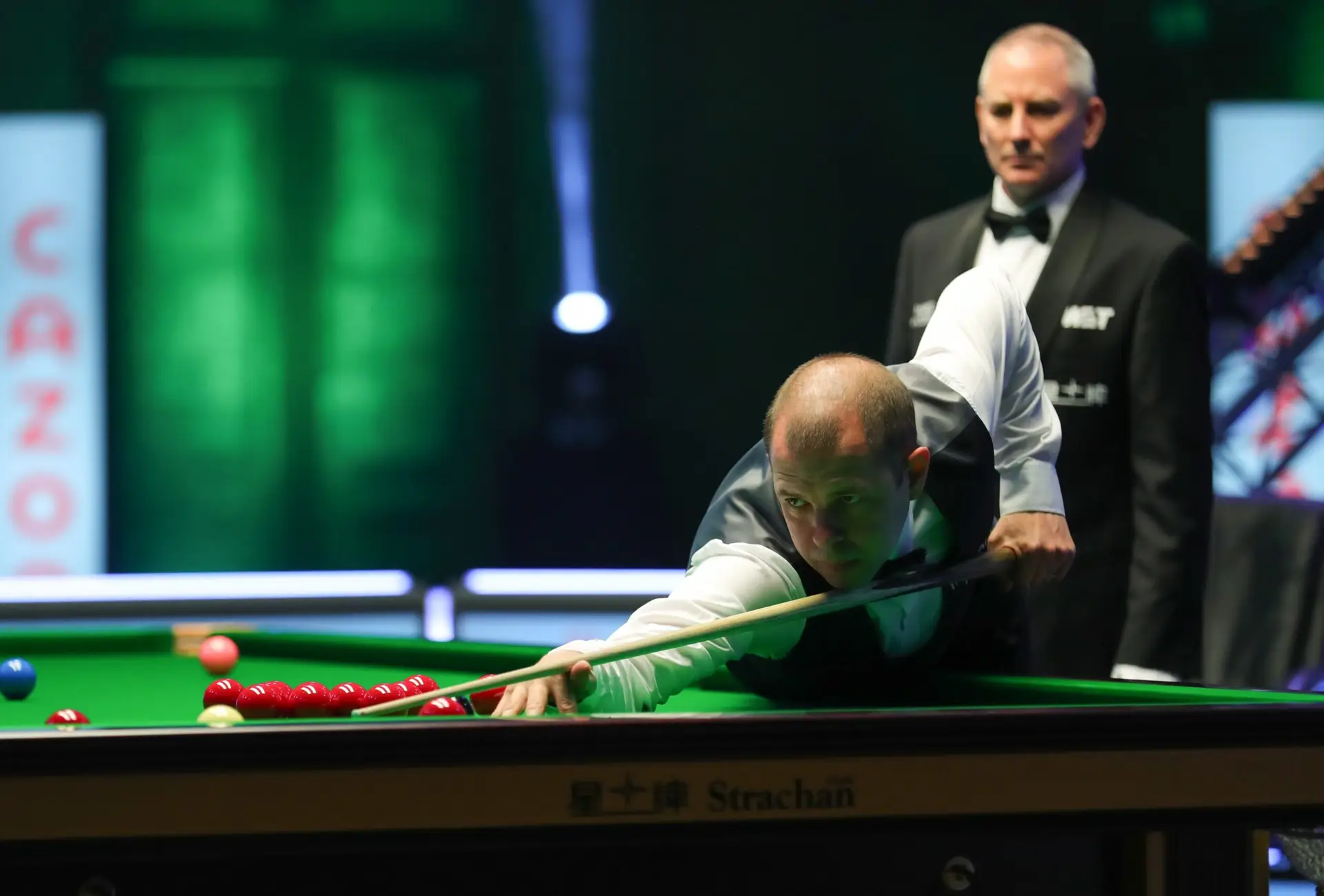American pool is one of the most popular types of billiards in the world. At first glance, it may seem simple, but in reality, it is a game where chance plays a minimal role. Success is achieved through precise shots, understanding of geometry and angles, as well as the ability to plan several moves ahead. It is not just a physical action but a game that requires calculation and anticipation. Let’s talk about the specifics of American pool below.
What Makes American Pool Unique
Pool in the American style is not just a game format but a well-structured system. The main difference is the enlarged pockets (6 mm wider than in Russian billiards), which fundamentally change the approach. Here, calculation is important, not strength. In disciplines like “eight-ball” and “nine-ball,” everything is based on accuracy—chance is eliminated, even if the shot looks spontaneous.

The playing table is standard: 9 feet (254×127 cm), height – 76 cm, weight – around 400 kg. The surface is slate covered with cloth 70/30, often Simonis or Championship. Without these parameters, the features of American pool are not revealed: only on such equipment does the game become dynamic, systematic, and controllable.
Rules and Features of American Pool
The rules of pool exclude chaos. Everything is regulated—from the break to penalties. A shot from the hand is only allowed in case of a foul or if the ball does not touch the rail. Violation results in a foul.
Each shot requires either pocketing a ball or hitting a rail. The game is built on logic: the cue ball is white, the others are numbered from 1 to 15, plus the black (8). The balls are of perfect shape, weighing 156–170 g, with a diameter of 57.2 mm. All parameters affect the physics of rebound.
A foul is a system failure: double hit, failure to touch a rail, ball off the table—all are penalized. A repeated foul leads to technical defeat. It is not just a formality but the foundation on which the logic of American billiards is built.
Attack Logic: Strategies and Trajectories
Strategies in American billiards are based on anticipation. It’s not just about making a shot but creating the next position. The ability to apply the necessary spin, calculate the rebound, measure the line to the millimeter. This is what makes the difference between a novice and a master.
Classic tactics include:
- Cue ball control. The cue directs the geometry, not the force. The player guides the shot, not strikes it.
- Ball development. Pocketing without preparing for the next shot is a mistake.
- Called shots. In “eight-ball,” the player must designate a pocket in advance. Missing the designated pocket results in a lost turn.
The system allows for a series of precise calculations even in chaotic situations. For example, when breaking a rack of 9 balls arranged in a diamond shape, the initial shot goes under the first ball diagonally. The angle of impact should not exceed 45 degrees; otherwise, the pocket will not accept the ball.
Cue, Pockets, and Space
Understanding the equipment’s construction is essential to grasp the essence of the game. The cue is a tool for precision. Length – 147 cm, weight – 560 g. The center of gravity is closer to the front third. The tip is leather covered with chalk for maximum grip. It’s not just a stick but an extension of thought.
The pockets are not just gaps but absorption mechanisms. Width – 11.4 cm, with a sloped edge. Everything depends on the correct pocketing. A ball can bounce out even if half of it is already inside. This is not a flaw but a feature.
The balls strike a balance between weight and grip. The player tracks not only the trajectory but also the surface behavior. Polishing minimizes friction—this is why a ball moves up to 5 meters on a smooth table without losing energy.
Key Principles of Successful Pool Play
Billiards is not just about accuracy but like chess on green felt. Here, victory is not about the strength of the shot but about precise calculation and thoughtful strategy.
To master American pool, it is important to remember the basic trio of actions:
- Analyzing the position. Each shot starts not with the cue but with the mind. Factors like angle of impact, rebound, and the position of other balls are considered.
- Cue control. A sharp shot rarely leads to success. It’s more important to accurately direct the cue so that it remains in a favorable position after the shot.
- Ability to see ahead. The winner is not the one who pockets balls but the one who builds a chain of shots. A strategic approach is the key to a series of successful moves.
These principles form the basis of a confident game. Without them, even the most accurate shot will not lead to victory in a long match.
Nuances That Determine Victory
The nuances of American pool also manifest in the psychological aspect. The pace sets the emotion. Every player feels pressure—especially when only the black ball remains on the table. An error at this moment is not just a defeat but a collapse of the strategy.
There are thousands of possible scenarios. Calculations involve angles of reflection, friction force, speed of the shot. Professionals use calculation tables, rebound models, 3D diagrams. A novice can rely on color, position, and angle to the nearest pocket.
Among the popular game variations are “Straight Pool,” “Ten Ball,” “One Pocket.” However, 8-ball and 9-ball dominate most tournaments due to their logic, dynamics, and spectacle. The first requires pocketing one’s group of balls (stripes or solids) and then the eight ball. The second involves potting balls in numerical order.
How Fouls Arise and What Lies Behind Them
Every violation in pool is not just a mistake but a structural element. A foul triggers a chain of consequences. After any foul, the opponent gets a shot from the hand—the right to place the cue ball anywhere on the table. This radically changes the course of the game. Even one incorrect shot can shift the dynamics, especially in the late stages of the game.
Common reasons for fouls include:
- contacting a ball without subsequent contact with a rail;
- double hitting the cue ball;
- ball leaving the playing area;
- violating the order of potting (e.g., potting the black ball prematurely);
- incorrectly calling a shot.
Even an experienced player can commit a foul under pressure—hence, it is important to maintain pace, keep a cool head, and not lose the logic of the game.
Novice and Master: How to Distinguish Them from the First Game
In American pool, the difference between a beginner and an experienced player is immediately apparent. A novice relies on strength, while a master relies on precision. These are the key features of American pool: mistakes are not hidden.
Even the break reveals a lot. A professional breaks with a slight offset to distribute energy correctly. A novice breaks in the center, leaving the balls clustered together.

Without understanding the logic, a novice pockets the first available ball, forgetting about the cue ball’s position. There is no follow-up shot—the initiative shifts to the opponent. In professional circles, this is a voluntary exit from the field.
Remember the Specifics of American Pool and Move Towards Victory!
The essence of the specifics of American pool lies in minimalism. Every element serves a function. Mistakes are not forgiven, calculation is rewarded. This game develops thinking, requires discipline, and rewards accuracy. Not a single move goes without consequences. This is its appeal: simple rules open the door to an infinite number of scenarios.
 en
en  ru
ru  de
de  ar
ar  es
es  nl
nl  hi
hi  fr
fr  it
it  pt
pt  el
el 



